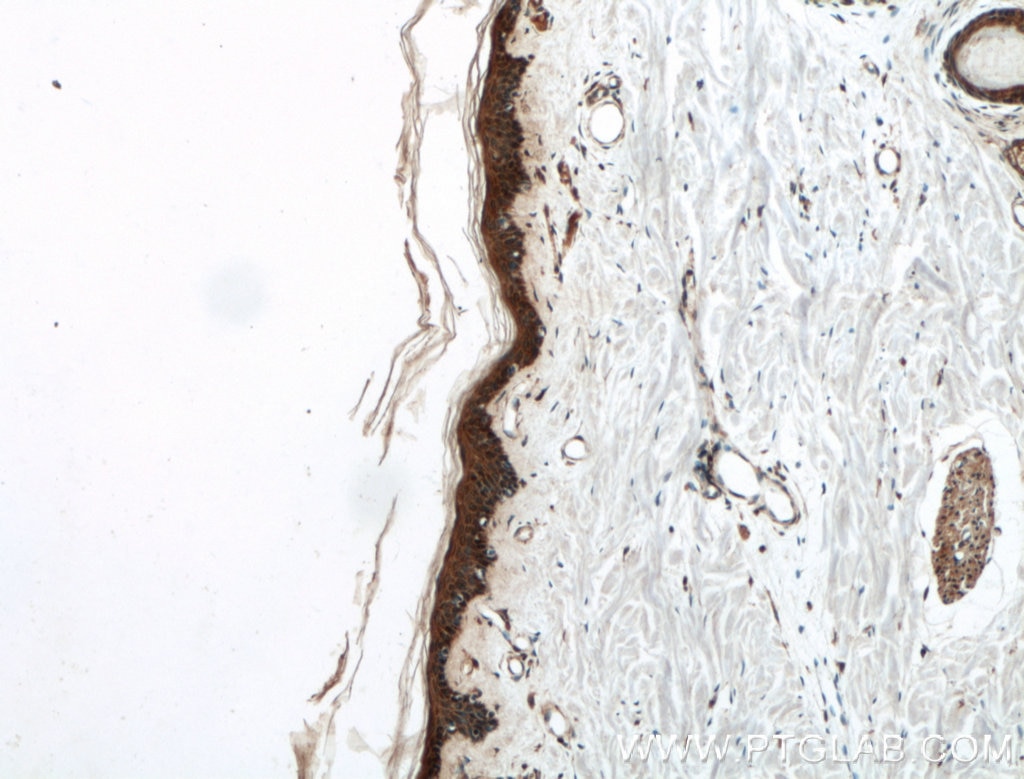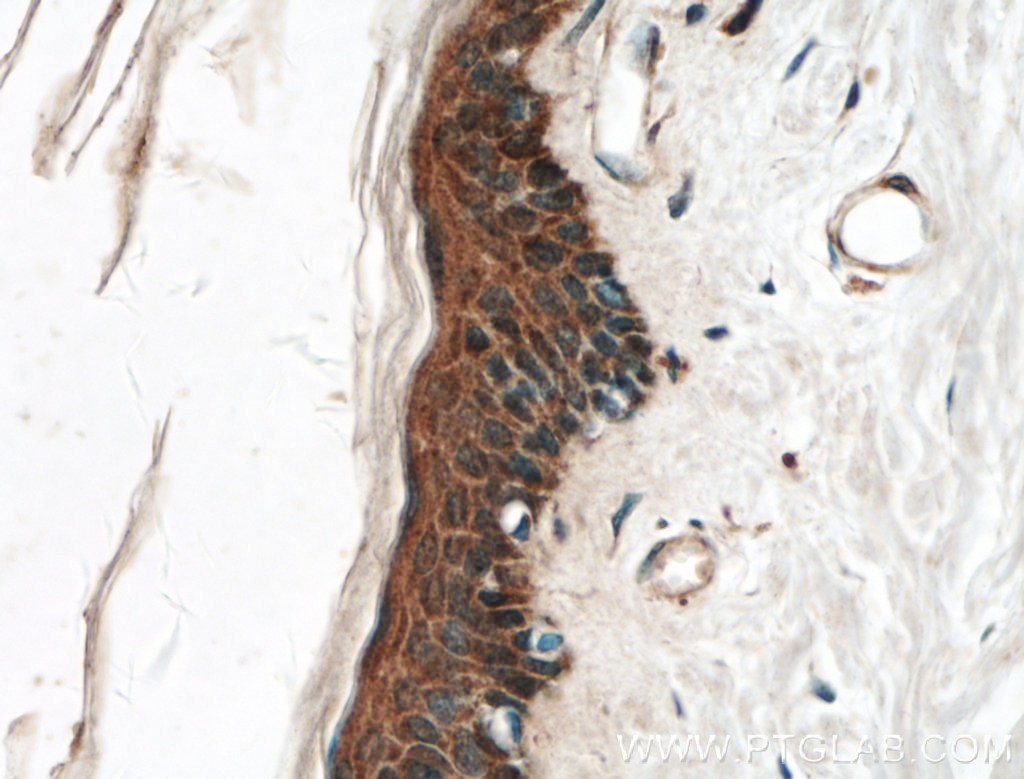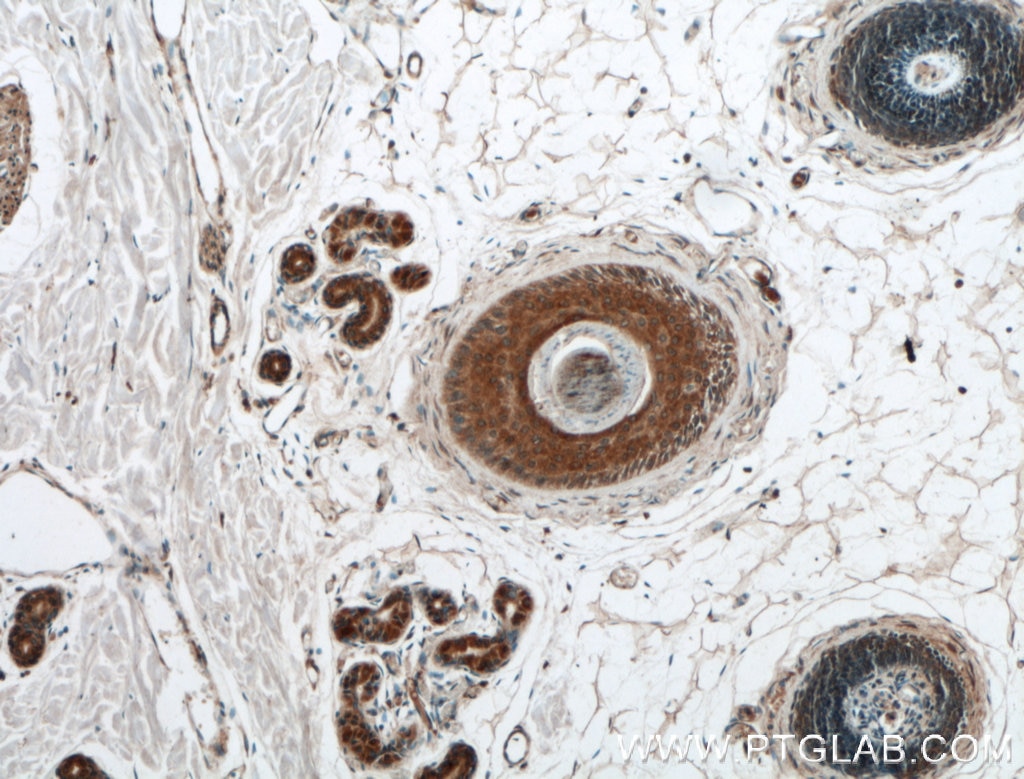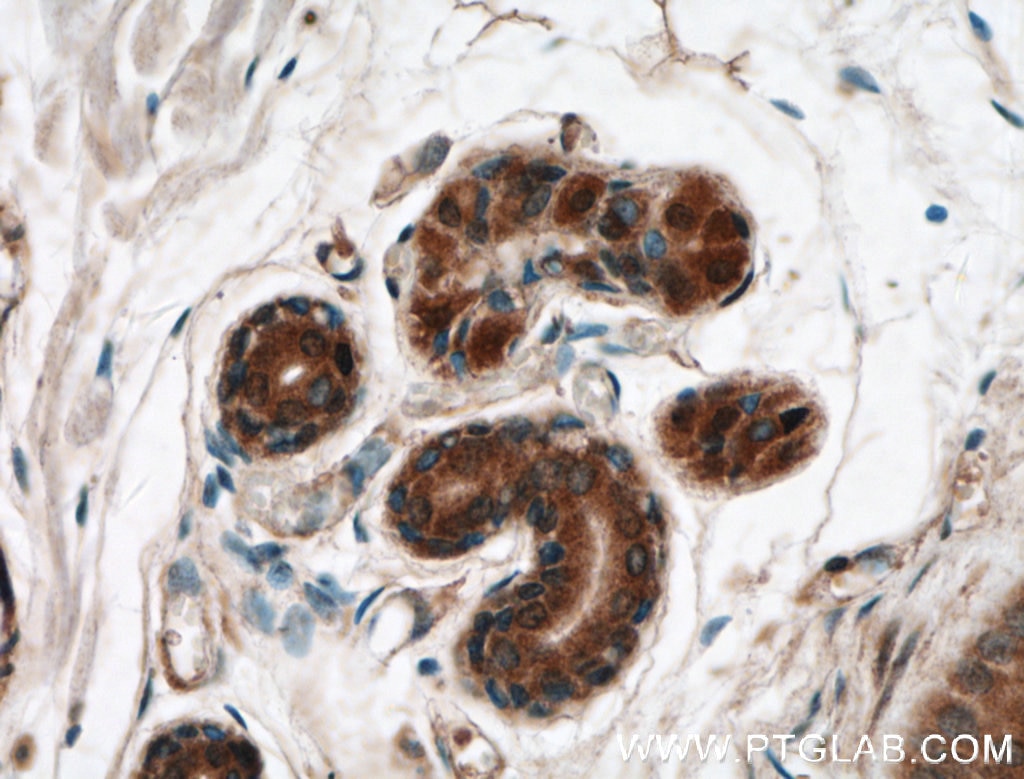Anticorps Polyclonal de lapin anti-EGF
EGF Polyclonal Antibody for IHC, ELISA
Hôte / Isotype
Lapin / IgG
Réactivité testée
Humain
Applications
WB, IHC, ELISA
Conjugaison
Non conjugué
N° de cat : 27141-1-AP
Synonymes
Galerie de données de validation
Applications testées
| Résultats positifs en IHC | tissu cutané humain, il est suggéré de démasquer l'antigène avec un tampon de TE buffer pH 9.0; (*) À défaut, 'le démasquage de l'antigène peut être 'effectué avec un tampon citrate pH 6,0. |
Dilution recommandée
| Application | Dilution |
|---|---|
| Immunohistochimie (IHC) | IHC : 1:50-1:500 |
| It is recommended that this reagent should be titrated in each testing system to obtain optimal results. | |
| Sample-dependent, check data in validation data gallery | |
Applications publiées
| WB | See 4 publications below |
| IHC | See 2 publications below |
Informations sur le produit
27141-1-AP cible EGF dans les applications de WB, IHC, ELISA et montre une réactivité avec des échantillons Humain
| Réactivité | Humain |
| Réactivité citée | Humain |
| Hôte / Isotype | Lapin / IgG |
| Clonalité | Polyclonal |
| Type | Anticorps |
| Immunogène | EGF Protéine recombinante Ag25997 |
| Nom complet | epidermal growth factor (beta-urogastrone) |
| Masse moléculaire calculée | 1207 aa, 134 kDa |
| Numéro d’acquisition GenBank | BC093731 |
| Symbole du gène | EGF |
| Identification du gène (NCBI) | 1950 |
| Conjugaison | Non conjugué |
| Forme | Liquide |
| Méthode de purification | Purification par affinité contre l'antigène |
| Tampon de stockage | PBS with 0.02% sodium azide and 50% glycerol |
| Conditions de stockage | Stocker à -20°C. Stable pendant un an après l'expédition. L'aliquotage n'est pas nécessaire pour le stockage à -20oC Les 20ul contiennent 0,1% de BSA. |
Informations générales
Epidermal Growth Factor (EGF) is a type of mitogenic factor that stimulates the proliferation of various cells, including epithelial cells and fibroblasts. It is a small peptide composed of 53 amino acids with a molecular weight of approximately 6,000 Daltons. EGF contains three disulfide bonds, which contribute to its stability under acidic and high-temperature conditions. Human EGF is synthesized as transmembrane precursor proteins (1207 amino acids), which are proteolytically cleaved to generate the 54 amino acid mature EGF. EGF plays a crucial role in regulating cell growth, proliferation, and differentiation. When EGF binds to its receptor (EGFR), it activates intracellular signaling pathways that lead to DNA synthesis and cell proliferation. EGF is naturally present in various tissues and body fluids, including saliva, urine, and milk. It is primarily synthesized in the submandibular glands and duodenum.
Protocole
| Product Specific Protocols | |
|---|---|
| IHC protocol for EGF antibody 27141-1-AP | Download protocol |
| Standard Protocols | |
|---|---|
| Click here to view our Standard Protocols |
Publications
| Species | Application | Title |
|---|---|---|
Elife METTL3 promotes homologous recombination repair and modulates chemotherapeutic response in breast cancer by regulating the EGF/RAD51 axis. | ||
Genes (Basel) Evolutionary and Association Analysis of Buffalo FABP Family Genes Reveal Their Potential Role in Milk Performance. | ||
J Ethnopharmacol Proteomics analysis of tumor exosomes reveals vital pathways of Jinfukang inhibiting circulating tumor cells metastasis in lung cancer. | ||
Int J Exp Pathol Clinicopathological features and immunophenotype of Silva pattern system in endocervical adenocarcinoma | ||
Evid Based Complement Alternat Med Evodiamine Inhibits Gastric Cancer Cell Proliferation via PTEN-Mediated EGF/PI3K Signaling Pathway. | ||
ACS Appl Mater Interfaces Paper/PMMA Hybrid 3D Cell Culture Microfluidic Platform for the Study of Cellular Crosstalk |





